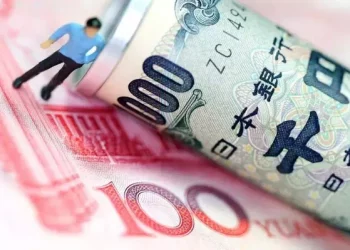The Japanese Yen (JPY) has edged lower against the US Dollar (USD) on Wednesday as investors analyze the Bank of Japan‘s (BoJ) monetary policy outlook. On Tuesday, BoJ Governor Kazuo Ueda stated that the central bank has ample time to assess market and economic conditions before making any adjustments, indicating no immediate plans to raise interest rates.
Governor Ueda emphasized that Japan’s real interest rate remains significantly negative, a situation that is supporting economic activity and contributing to rising prices. Finance Minister Shunichi Suzuki expressed confidence that the BoJ would implement suitable monetary policy actions while maintaining close coordination with the government.
Market participants are now awaiting the release of the BoJ Monetary Policy Meeting Minutes on Thursday, followed by Tokyo’s inflation data on Friday, which are expected to offer further insight into the economic outlook and potential policy shifts.
The USD/JPY pair is experiencing downward pressure as the US Dollar struggles following weaker consumer confidence data released on Tuesday. This has intensified dovish expectations for the Federal Reserve’s upcoming monetary policy decisions.
Market Highlights: Federal Reserve Governor Michelle Bowman remarked on Tuesday that key inflation indicators remain “uncomfortably above” the 2% target, advocating for caution as the Fed contemplates interest rate cuts. Despite this, she favors a more traditional approach, supporting a quarter percentage point reduction.
The US Consumer Confidence Index fell to 98.7 in September, down from a revised 105.6 in August, marking the largest decline since August 2021. In Japan, the Jibun Bank Composite Purchasing Managers Index (PMI) slipped to 52.5 in September from 52.9 in August, although it still reflects growth in private sector activity for the eighth consecutive month, primarily fueled by the services sector. The Services PMI increased to 53.9 in September, up from 53.7 the previous month.
In the US, the S&P Global Composite PMI expanded at a slower pace in September, recording 54.4 compared to 54.6 in August. The Manufacturing PMI unexpectedly contracted to 47.0, while the Services PMI exceeded expectations, reaching 55.4.
Minneapolis Fed President Neel Kashkari indicated on Monday that he anticipates additional interest rate cuts in 2024, though he expects these future reductions to be smaller than the one implemented in September. Similarly, Chicago Fed President Austan Goolsbee stated that more rate cuts are likely needed in the coming year, emphasizing the need for significant reductions.
Japan’s new “top currency diplomat,” Atsushi Mimura, noted in an NHK interview that many Yen carry trades have likely been unwound. He cautioned that a resurgence in these trades could heighten market volatility and assured that the authorities are closely monitoring the situation.
Technical Analysis:
The USD/JPY pair is trading around 143.40 on Wednesday. Analysis of the daily chart indicates that the pair is operating within a descending channel, reflecting a bearish trend. The 14-day Relative Strength Index (RSI) is slightly below the 50 mark, confirming the prevailing bearish sentiment.
On the downside, the pair is currently testing the nine-day Exponential Moving Average (EMA) at the 143.03 level. A break below this support could drive the pair toward the 139.58 region, marking the lowest point since June 2023.
Conversely, the USD/JPY pair may attempt to test immediate resistance at the upper boundary of the descending channel, around the 144.10 level. A breakout above this resistance could pave the way for the pair to challenge the psychological barrier of 145.00.
Related Topics:
























